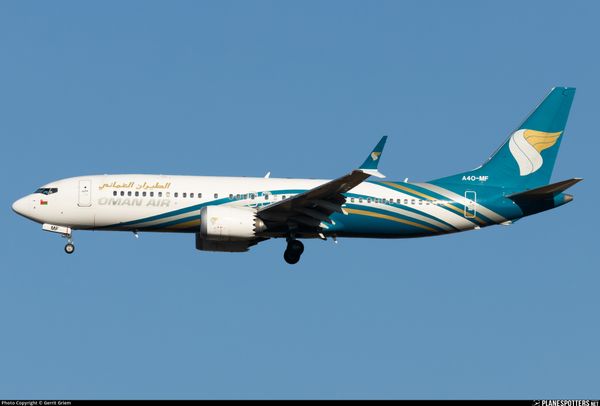During the Cold War, the world of military and commercial aviation was an area in which the United States and the Soviet Union attempted to outmatch each other. Between 1946 and 1991, many "races" to construct faster and stealthier planes occurred. When the Soviet Union unveiled a more technologically advanced fighter jet than the Americans, the Americans would develop a fighter jet with significantly expanded capabilities than the Soviets within a year.
The ever-looming threat of technological inferiority drove innovation in the aviation industry on both sides of the Iron Curtain. One of the most prominent examples of this ever-unending Cold War rivalry was the race to conquer commercial supersonic air travel.

Spies, The Concorde and The West
In the Western world, the push to develop and fly a supersonic passenger airliner was, as all ideas come, due to the potentially enormous profit that could be gained from operating supersonic airline services. While many aerospace companies ideated numerous potential designs of a supersonic airliner, only one out of multiple ideas was successfully implemented.
Seeing the potential pride and prowess that building a supersonic airliner could bring, the British and French governments met in November 1962 to sign a treaty establishing a fully funded and fledged effort to establish a supersonic passenger airliner. The Concorde was developed and built in joint partnership with French aerospace company Aerospatiale and British company BAE Systems.

Due to the Cold War, the Soviet Union intended to surpass the West and their technological advancements by any means necessary, including espionage. During the Concorde's development in the West, spies stole numerous documents and secretly passed them on to Soviet engineers. Among the documents secretly sent to the Soviet Union were the designs for the Concorde's Rolls Royce Olympus 593 engines. The two-part film "Concorde: The Race for Supersonic" goes into great detail describing how a Soviet spy, nicknamed "Agent Ace", "...handed 90,000 pages of classified records to the Soviet Union in the 1970s..."

Similarities Between the Tu-144 and Concorde
The Tupolev Tu-144 embarked on its inaugural flight on December 31, 1968, and upon its unveiling to the West, many noticed similarities between the Tu-144 and the actual Concorde. This similarity in looks and design of the Tu-144 was a direct result of stolen Western documents, which the Soviets used in designing their supersonic passenger airliner. The Tu-144 had a similar droop snout, delta wing, fuselage, and even engine design to the Concorde.
These similarities led Western media to nickname the aircraft "Concordski." However, two aircraft resembling each other on the surface did not mean they were structurally and designed similarly. While the Concorde could cruise at supersonic speeds without using afterburners, the Tu-144 had to keep its engines' afterburners on continuously to maintain supersonic flight, significantly reducing the aircraft's range compared to the Concorde.

Technical and Safety Issues
The development of Tu-144 was rushed due to the Soviet Union's desire to fly the aircraft before the West, and while this goal was achieved, significant sacrifices were made to the design. During the aircraft's first passenger flight with Soviet flag carrier Aeroflot, the Tu-144 was plagued with issues. Throughout the aircraft's operational life, flight issues ranged from excess cabin noise to multiple onboard systems failing mid-flight to cockpit sirens unable to be shut off.
Around January 25, 1978, an Aeroflot Tu-144 flight operating from Moscow to Alma-Ata (Almaty) experienced multiple onboard systems failures before taxiing for takeoff. Onboard the flight, there were numerous foreign journalists and other important foreign figures. Instead of cancelling the flight (the safest option), Soviet officials let the flight take off.

After takeoff, a siren went off in the cockpit of the flight. The pilots could not turn off this siren, which blared the entire flight. The Tupolev crisis center remained in contact with the flight pilots and predicted that parts of the landing gear would not come down upon landing. This did not turn out to be the case, and the flight landed without incident.
The cabin noise inside the Tu-144 was so loud that when commenting on their experiences onboard, foreign journalists said they had to write on napkins instead of talking due to the excess cabin noise. Compared to the Concorde, foreign journalists also noted how cramped the cabin of the Tu-144 was compared to its Western counterpart.

Multiple Fatal Accidents
The Tupolev Tu-144's technical issues were especially pronounced at the 1973 Paris Airshow; the first ever Tu-144 to fly suffered an in-air breakup of its fuselage while performing maneuvers within the aircraft fuselage stress limits. According to an aerospace aluminium and beryllium alloys expert, "...the Tu-144 design allowed a higher incidence of defects in the alloy structure, leading to the fatal in-air breakup of the aircraft in the [1973 Paris Airshow]..." The break up of the aircraft mid-air killed all those onboard.
On May 23, 1978, a Tu-144 passenger jet performed a test flight before the aircraft's delivery to Aeroflot. At around 3,000 meters, a fire started in the APU of the Tu-144. The fire damaged the aircraft's engines and filled the cockpit with smoke. The flight pilots managed to perform a belly landing of the plane in a field near the Russian city of Yergoryevsk. Two of the flight engineers onboard were killed, with six other crew members suffering injuries. Compounding these crashes were other crashes of different variants of the Tu-144 during test flights.

The Tu-144's design flaws, poor build quality, quality control issues, and uncomfortable cabin are primarily responsible for the aircraft's commercial failure in the Soviet Union. After less than 100 passenger flights, the Tu-144 was retired and sent to museums and research institutes or put into storage. Numerous examples of the aircraft remain in museums worldwide.
The Tu-144 only operated one commercial route; passengers could fly between Moscow and the rather obscure Soviet city of Alma-Ata (now Almaty). This was the only route flown due to the Tu-144 needing to fly supersonic over sparsely populated areas to avoid the damage caused by the aircraft's supersonic boom.
Engine Failure Forces United 777 Emergency Landing, Starts Brush Fire at Dulles Airport » Making a Stopover in Dubai? Discover How to Book a Yacht and Explore the City in a New Way » When Will the Boeing 777X Enter Service? Delays, Certification, and 2027 Outlook »
Comments (0)
Add Your Comment
SHARE
TAGS
STORIES Supersonic Concorde Russia US Geopolitics Soviet Union Investigation Tu-144 Tupolev AccidentRECENTLY PUBLISHED
 Oman Air Returns To Singapore After Nine Years with New Boeing 737 MAX Service
Oman Air Returns To Singapore After Nine Years with New Boeing 737 MAX Service. It will resume nonstop service to Singapore Changi Airport (SIN) starting July 2, 2026, restoring a vital link between the Sultanate and Southeast Asia that was suspended in 2017.
ROUTES
READ MORE »
Oman Air Returns To Singapore After Nine Years with New Boeing 737 MAX Service
Oman Air Returns To Singapore After Nine Years with New Boeing 737 MAX Service. It will resume nonstop service to Singapore Changi Airport (SIN) starting July 2, 2026, restoring a vital link between the Sultanate and Southeast Asia that was suspended in 2017.
ROUTES
READ MORE »
 Wizz Air Relaunches Suceava Base with Two A321neos and Seven New Routes
Wizz Air has officially reopened its base at Suceava "Stefan cel Mare" International Airport (SCV). The reopening immediately enhances connectivity by launching seven new direct routes to five countries.
ROUTES
READ MORE »
Wizz Air Relaunches Suceava Base with Two A321neos and Seven New Routes
Wizz Air has officially reopened its base at Suceava "Stefan cel Mare" International Airport (SCV). The reopening immediately enhances connectivity by launching seven new direct routes to five countries.
ROUTES
READ MORE »
 How Borders Shape Human Stories
The existence of borders can be seen through not only maps; they are also emotional markers that determine how an individual travels or moves, how an individual dreams, and what the individual considers to be their place in the world.
INFORMATIONAL
READ MORE »
How Borders Shape Human Stories
The existence of borders can be seen through not only maps; they are also emotional markers that determine how an individual travels or moves, how an individual dreams, and what the individual considers to be their place in the world.
INFORMATIONAL
READ MORE »



